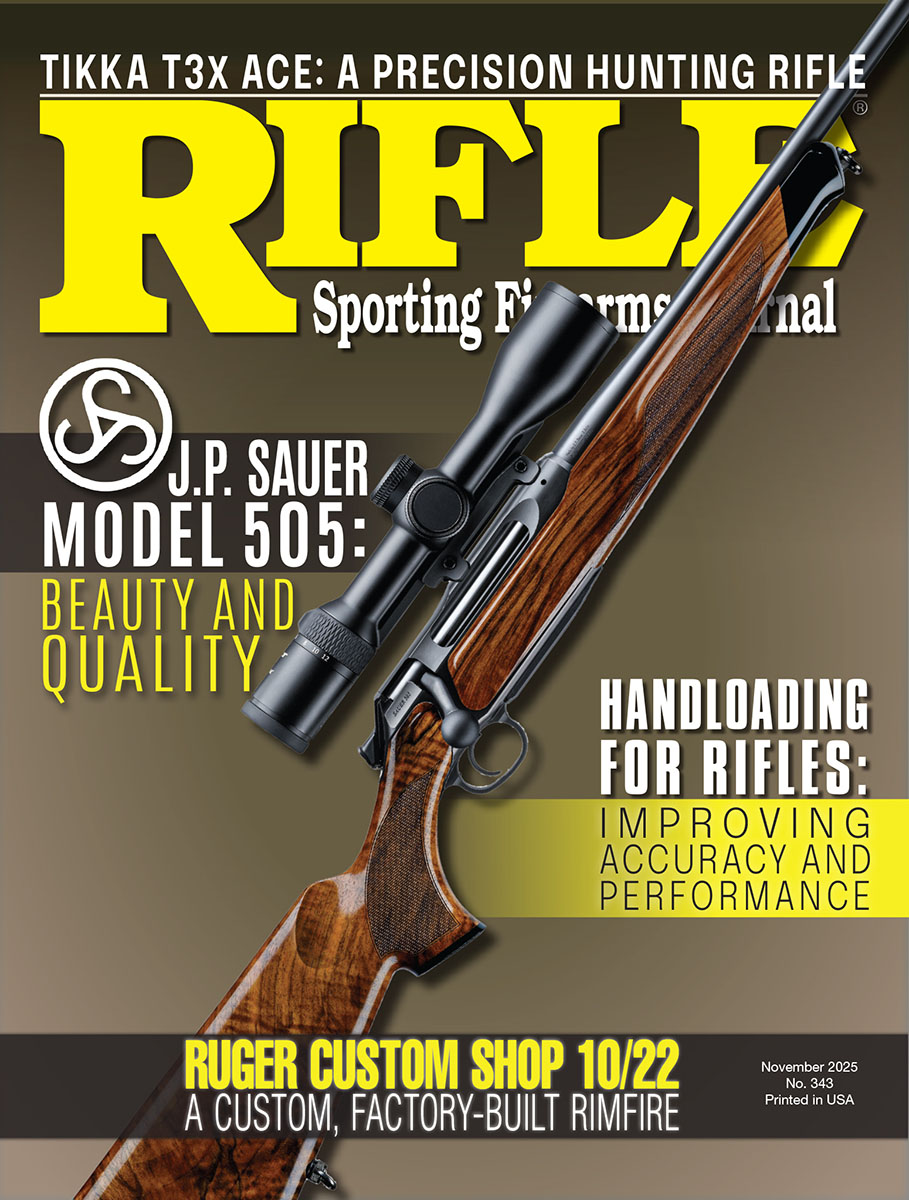Mostly Long Guns
The 7mm Remington Magnum
column By: Brian Pearce | November, 25
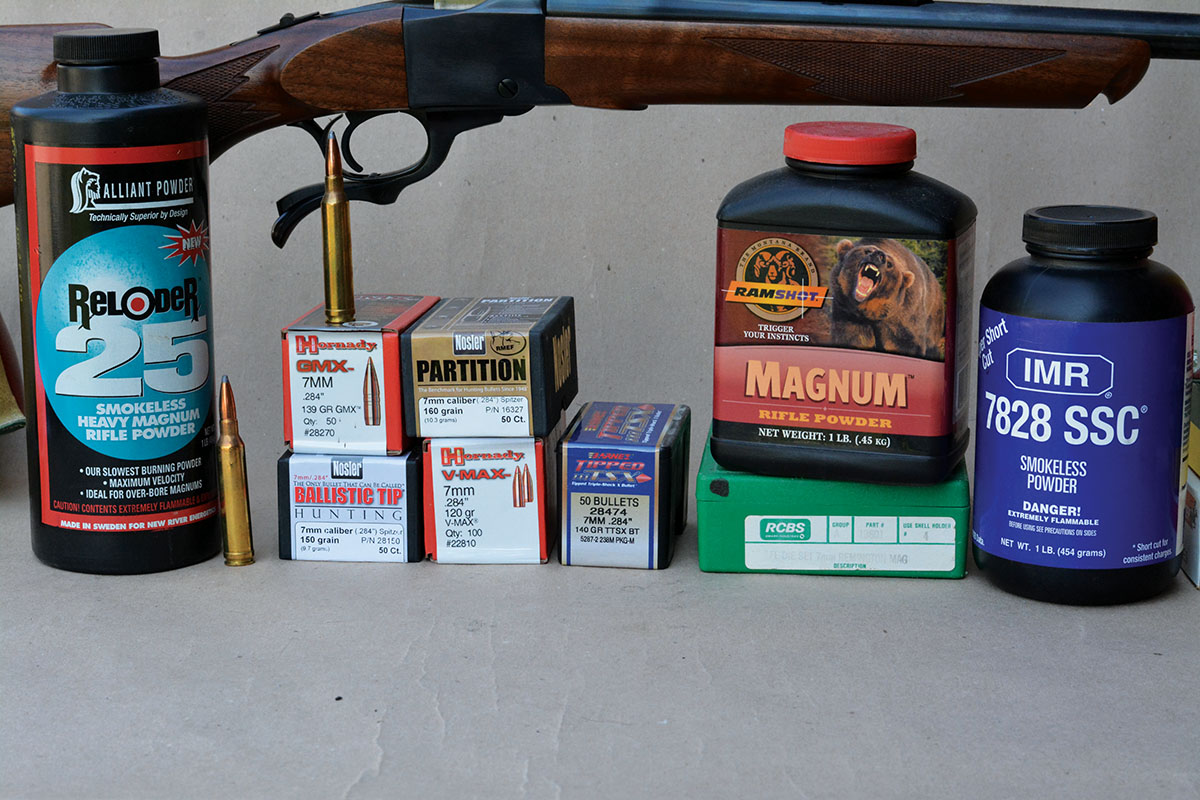
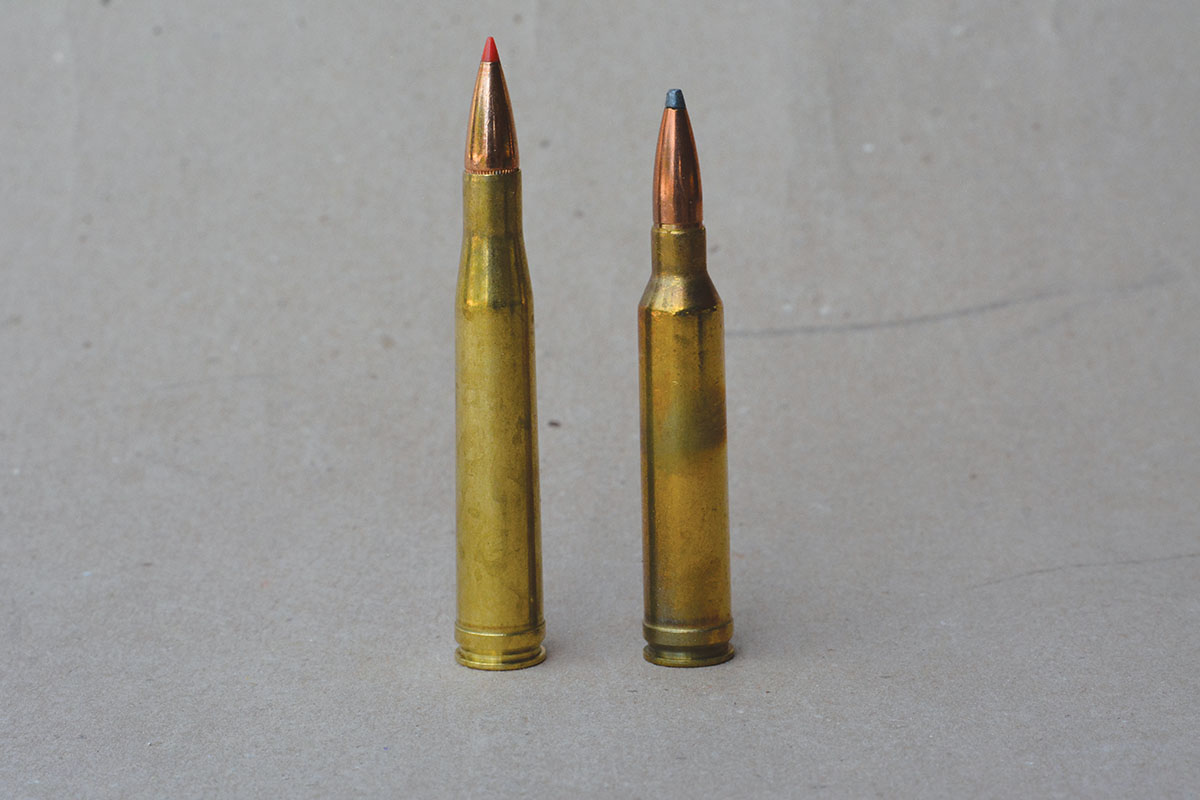
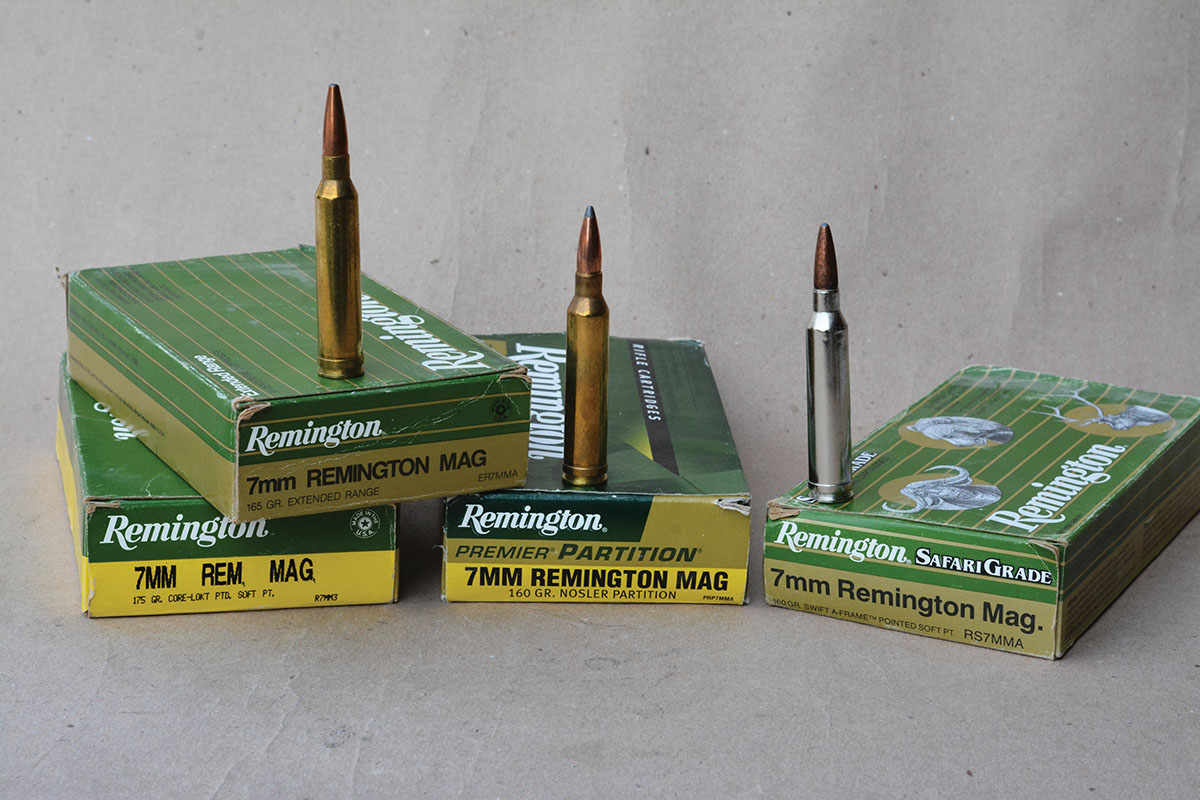
Let us briefly turn the clock back to 1892, when the 7x57mm or 7mm Mauser was introduced as a smokeless military cartridge and quickly gained popularity as a sporting cartridge throughout Europe. The advantages of the 7mm Mauser - including modest recoil, high ballistic efficiency and long-range effectiveness - soon became painfully apparent to U.S. troops during the Spanish-American War of 1898, wherein many lives were lost due to its superiority over U.S. military rifles. In essence, the recently adopted 30 U.S., or 30-40 Krag, cartridge could not match the 7mm Mauser ballistically and was already outdated. This resulted in the development of the 30-03 and eventually the 30-06 Springfield. Along with the 30-30 and several other sporting cartridges, Americans have generally favored 30 caliber rifles, which is understandable. While the 7mm Mauser was offered in domestically manufactured rifles, sales were very limited, as it was viewed as an odd foreign cartridge with a metric or “mm” designation. That was about to change.
During the late 1950s, Winchester announced a series of short-action belted magnum cartridges, including the 458, 338 and 264 Winchester Magnum. These were each designed to function in 3.340-inch, or 30-06-length, actions. The parent case was the belted 375 and 300 H&H Magnums, which required a long action to accommodate the 3.600-inch cartridge lengths. Thus, the new Winchester rounds were indeed magnum cartridges. As expected, sales for the 458 were limited, as few U.S. sportsmen hunted dangerous game in Africa, but sales were respectable, and it became a new big-bore bolt-action standard cartridge as guns and ammunition were readily available. The 338 gained a loyal following but was best suited to large bears, moose and similar game. Recoil was stout for the average rifleman, and it was more powerful than necessary for deer, so it too had limited widespread appeal.
The 264 was different, as it had broad general appeal to western hunters pursuing deer, antelope, sheep, black bear and even elk in open country. Winchester appropriately called the rifle the Model 70 Westerner, which came with a 26-inch barrel. Early ballistics were impressive, with a 100-grain bullet listed at 3,700 feet per second (fps) and a 140-grain bullet at 3,200 fps. Recoil was modest, and it clearly offered a flatter trajectory than its closest competitor, the popular 270 Winchester. Sales soared, and it appeared to have a very bright future. However, it had a couple of significant drawbacks, including rapid throat erosion. Winchester responded with a stainless-steel (blackened) barrel, but it was still prone to a short barrel life. While velocities were impressive, they fell short of listed speeds, as was typical of cartridges from that time. In an effort to lighten the rifle, which was a period trend, Winchester introduced a featherweight version with a 22-inch barrel. I remember a hunter who came to our ranch to hunt antelope and deer with this combination. Using the 100-grain factory load, the ball of fire at the muzzle and the report were impressive - but obnoxious. Then there was the two-diameter bullet, but that is a subject for another day. Clearly, there was demand for a similar cartridge that would correct the above issues.
Remington was in the process of revamping its Models 721, 722 and 725 rifles to become the Model 700 in 1962. It featured modern upgrades and a new look. With the announcement of the 700 came a brand-new cartridge, the 7mm Remington Magnum. This was bold because of its millimeter designation, which Americans had not fully warmed to. Remington had introduced the excellent 280 Remington in 1957, which was a 7mm, but it was intended to compete with the hugely popular 270 Winchester, which had a 32-year head start. Unfortunately, it did not fare well for several reasons. Nevertheless, some nervous ballisticians and engineers at Remington had no reason to be concerned.
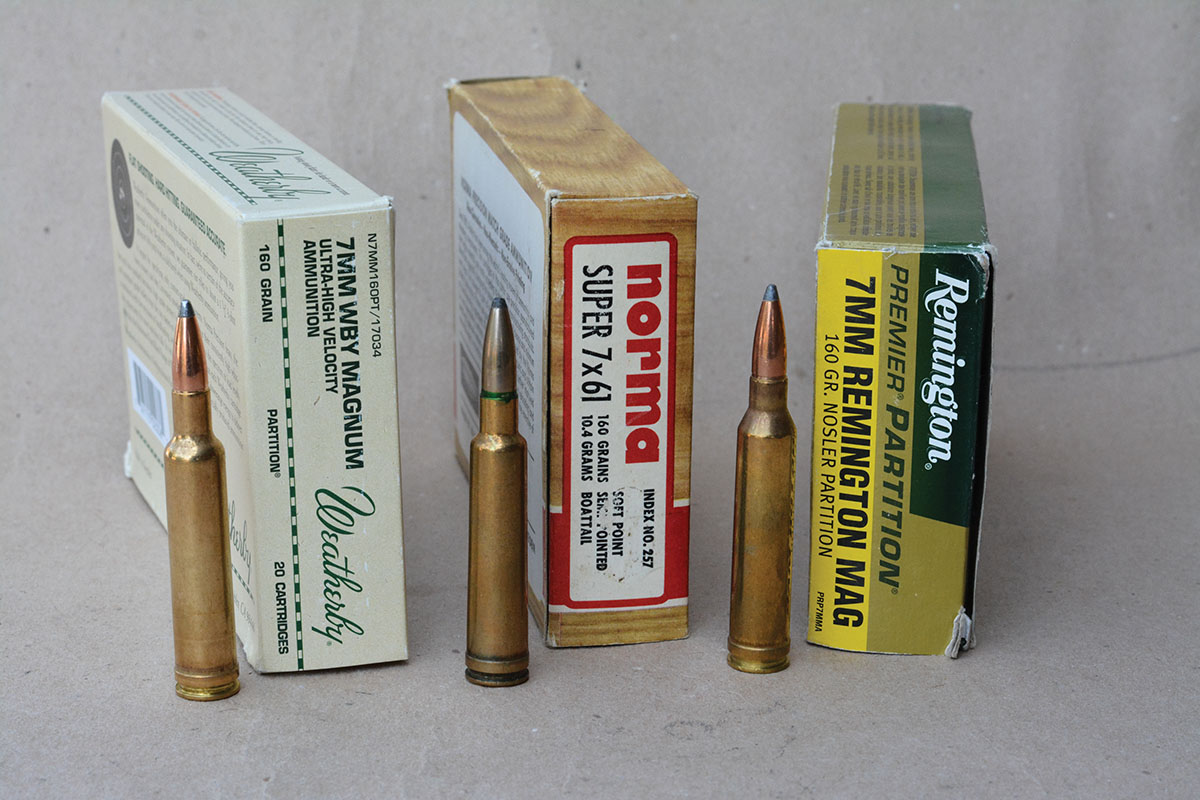
It is noteworthy that the other 7mm magnum cartridges had prepared the way for the Remington round. For instance, the 7mm Mashburn, developed by Art Mashburn, was created by shortening and necking down the 300 Holland & Holland (H&H) case to 7mm. Bob Reynolds necked the 264 up to 7mm to create a wildcat during the late 1950s. During the 1950s, Phil Sharpe and Richard Hart created the 7x61 Sharpe and Hart based on the belted case, with rifles produced by Schultz & Larsen. Perhaps the most influential cartridge was the 7mm Weatherby Magnum developed by Roy Weatherby during the 1940s. It was made from the H&H belted case with an overall length of 3.360 inches, allowing it to work in most (but not all) 30-06-length actions. While this cartridge was available in custom Mauser 98s, Model 70s and eventually the Mark V when it first appeared in 1957, it was not priced for the working man’s budget, and factory loads were also premium.
Early 7mm Remington Magnum loads listed a 150-grain bullet at 3,260 fps (currently listed at 3,110 fps) and a 175-grain-bullet at 3,070 fps from a 24-inch barrel. Typical of that era, these velocities were overstated and have since been adjusted. Regardless, the 7mm proved highly versatile and outstanding for hunting deer and antelope in open country where long shots are expected, but it still had enough power for black bear, elk and moose with heavier bullets. It also produced modest recoil that allowed most hunters to shoot it well, with properly placed shots, which is critical. It still recoiled enough to feel like a magnum, which most shooters liked. The .020-inch larger caliber significantly reduced barrel erosion compared to the 264. Early Remington rifles had blackened stainless steel barrels to help reduce throat erosion. The following year (1963), Winchester announced the 300 Winchester Magnum to compete as an all-around cartridge for North American game. The competition between the Remington and Winchester cartridges to find favor with hunters has been fierce. The 7mm Remington Magnum became so popular that virtually every rifle manufacturer began offering guns so chambered – including Ruger, Savage, Winchester and virtually all imported bolt rifles.
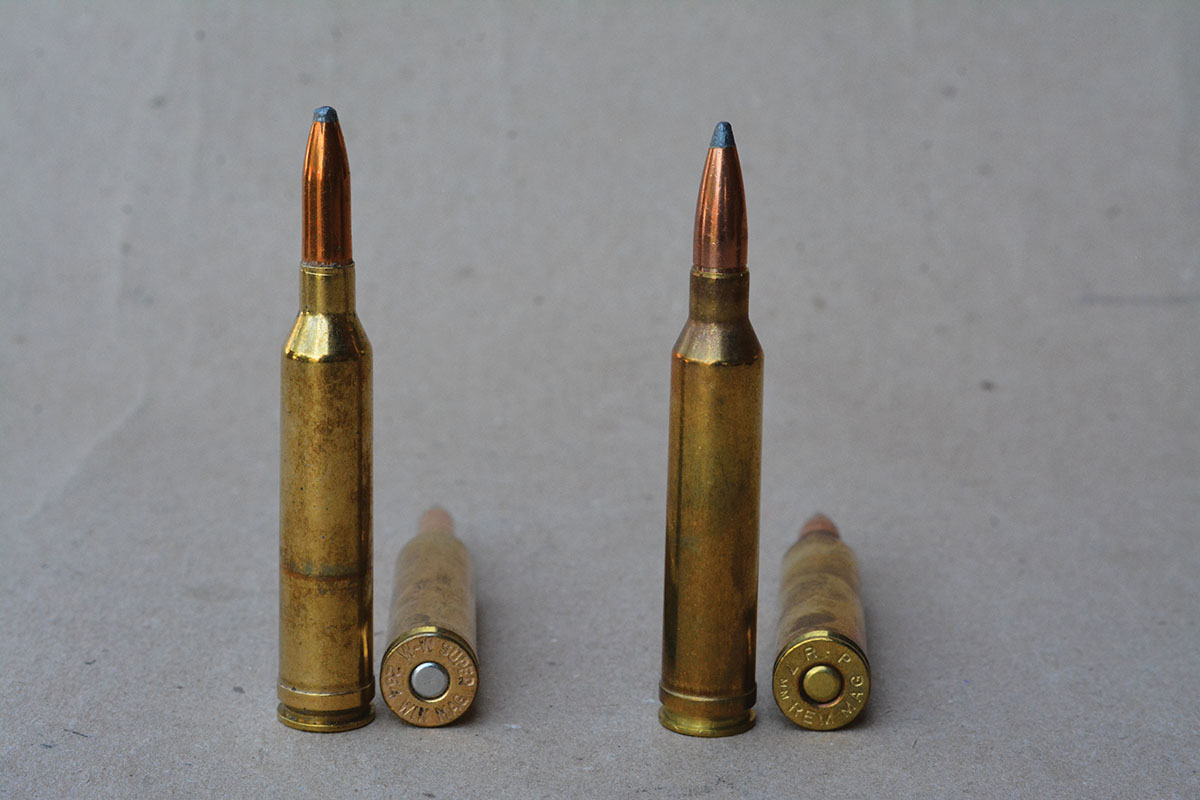
Most manufacturers use a 1:9- or 1:9.5-inch barrel twist that will stabilize bullets ranging from 100 through 175 grains. Some modern, super-low-drag 175-grain (and heavier) target and match bullets require a faster twist for proper stabilization. That said, the most useful bullets for big game hunters generally weigh between 139 and 162 grains. However, there are still several 175-grain premium hunting bullets for heavy game, including the Speer Grand Slam, Swift A-Frame, Nosler AccuBond and Partition, among others, that stabilize perfectly with the above twist rates.
Long-range match shooters soon recognized the virtues of the 7mm Remington Magnum when paired with high ballistic coefficient (BC) bullets such as the Sierra 168-grain MatchKing, which won the prestigious 1,000-yard Wimbledon in 1970.
In addition to becoming the most popular 7mm in the U.S., it is one of my favorite hunting cartridges and has been a staple in my rifle battery since the 1970s. In short, it bridges the gap between the 270 Winchester and 300 Winchester Magnums, which are two other cartridges I favor. The 7mm offers more muscle than the 270 and has a broader bullet selection, making it suitable for a wider variety of game. While it falls short of the 300 in terms of power, it can be housed in a lighter rifle - a mountain rifle, if you will - which is appreciated in rugged terrain. It still boasts a flat trajectory that helps make hits at any reasonable distance.
Many of the trophy mounts on my wall have been taken with the 7mm, including long-distance mule deer, antelope, elk, caribou and other game. I once took a Ruger M77 Mark II All-Weather 7mm Magnum to Canada on a self-guided caribou hunt. The migration had not really started, so I began in the dark, paddled a few miles across a large lake, and hunted them the old-fashioned way. The first bull was dropped with a single shot at over 450 yards. After packing and floating him out and hanging the meat, a couple of days later, a second very wide bull was taken at an even greater distance - again, with a single shot. I had total confidence in my carefully selected handloads, and the 7mm performed exactly as expected.
Most recent rifle cartridge designs are void of the belt and feature at least 30-degree shoulders for a more efficient burn and other advantages. When used in the field at practical distances, the 7mm Remington Magnum is still a great round that offers a balanced blend of power, velocity, flat trajectory, accuracy, respectable barrel life and widespread ammunition availability, which cannot be said of most other 7mm cartridges trying to replace it. When ammunition is lost or stolen while traveling, which has happened to me several times, the hunt can continue.


